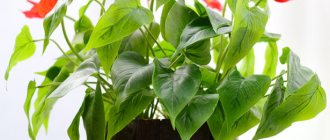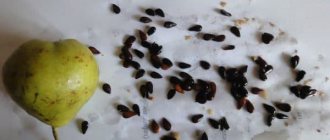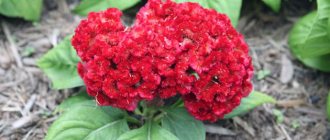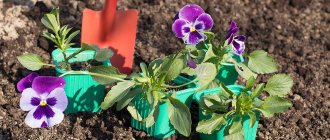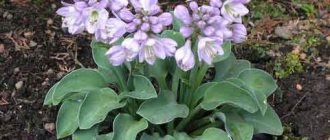Obtaining seeds at home
Like all ancient evergreens, cypress has cones with the help of which it reproduces in the wild. Planting material is obtained from ripe cones. In addition, it can be purchased at gardening stores, but this is not at all necessary. Seeds are easily obtained from mature cones, and their germination level is practically no different from store-bought ones.
Features of growing cypress from seeds
Due to the fact that this tree is very heat-loving, it is not particularly popular among breeders in central Russia. After all, it is difficult for a plant to survive a harsh winter and often it simply dies before reaching the warm season. That is why you need to germinate seeds at home, where they will be provided with the optimal temperature. The whole process takes place in several stages:
- Stratification. This complex word means keeping planting material in the cold (in modern conditions it is easiest to use a regular refrigerator). The seeds of many conifers and evergreens must go through such a mandatory “wintering”, otherwise they will not be able to sprout normally. Stratification should last 3-4 months. Soak. Before planting directly into the ground, the seeds must be kept in warm water for 10-12 hours. This will help them swell.
- Landing. The most suitable option for cypress is the standard arrangement in the ground: 4x4 cm. But you don’t need to use pots for these trees; ordinary wooden boxes will be enough. The main thing is that they have a suitable length and are not too tall, otherwise the seedlings will die.
- Another method of germination is to first place the seeds in sawdust or sand mixture. In such an environment, they must be allowed to sprout their first shoots, and then transplanted into the ground.
- Transfer. The germination rate of cypress seeds is approximately 50%, so it is worth taking a supply of planting material in advance. After the first bushes begin to grow and reach 5 cm in height, they will need to be placed in separate pots. Otherwise, the trees will begin to interfere with each other and will not be able to reach normal size. It is better to keep young animals at home in order to prevent them from freezing. After 10-12 months, if climatic and weather conditions allow, you can take the seedlings out into the yard to stand in the sun.
This is a general scheme for germinating cypress bushes from seeds. However, it requires special care at home. Let's tell you more about it.
Cypress planting
The southern beauty does not tolerate noise, and the seedlings will need an area away from the roadway. Cypress loves light, but is afraid of direct sunlight, so choose a place for it in the country that is in the shade for at least a few hours a day.
When planting a southerner in open ground, make the distance between the holes so that the cypresses do not shade each other when they grow. Their size varies from 1 m (low-growing shrub) to 25 m (large-sized). In nature, it is capable of growing up to 40 m, but in dacha conditions it is unlikely to reach such dimensions.
Old cypress trees
Cypress will thank you if you plant it in soil half diluted with pine humus. If there is no humus, use the following soil substrate: peat, sand, turf soil, leaf soil - 1:1:1:2. Transfer your pets to open ground with a large lump of earth on the roots to avoid damage to the root system (cypress trees are capricious when transplanted). Make holes 50% larger than the size of the earthen ball, and when adding soil substrate, lightly compact it with your hands. Place the root collar (as in the case of transplanting seedlings) flush with the soil level. Don’t forget to dig in a support in advance - you can use a regular wooden peg. After planting, tie the tree trunk to a support. That's all))
Seedling care
As an ornamental plant, cypress is quite capricious. For example, it needs to be sprayed often, but not watered, to avoid rotting. The most vulnerable part of the shrub is the root system. It takes a long time to form and requires additional strengthening. You can fertilize seedlings with a mixture for coniferous plants about once a month. Also, during transplantation, there is no need to deepen the roots; they should be closer to the surface, so it is easier for them to absorb nutrients.
Cypress care
Cypress trees in the first years of life especially need regular feeding. From May to September, water young plants twice a month with mullein infusion: 5 kg of manure per 20 liters of water with the addition of 20 grams of superphosphate. You can also use special fertilizers for conifers. Cypress trees and shrubs over 4 years old need feeding only twice a season: in spring and autumn.
Young cypress trees need care
Spray the plants regularly in the early morning or late evening during the hot summer, otherwise the tips of their branches will turn yellow and dry out. Once every 2-3 weeks, add epin to the water for spraying: 1 ampoule (0.25 mg) per 5 liters of water. In winter, mulch the tree trunks of adult plants with peat, sawdust, fallen leaves or pine needles (needles are preferable). And “kids” under 3 years of age should be completely covered for the winter. Remove broken and dried branches in a timely manner. Trim the tops of the branches (no more than ¼) to form a crown. Do pruning in early spring, so the plants can more easily withstand stress.
Useful tips
As we have already found out, growing cypress from seeds is not an easy task. To implement it, only patience and enthusiasm are not enough; all the rules must be strictly followed. Let's give a few more recommendations that, according to conifer plant breeders, will help achieve better results. First, try soaking the seeds before planting not in ordinary water, but in a solution of root or epin.
The roots are the weak point of heat-loving conifers, so such preliminary feeding will not hurt.
Secondly, be careful when choosing the soil. Of course, you can use ordinary soil, but it is better to purchase a special soil mixture. The best option would be a soil composition for coniferous plants, which can be purchased at any specialty store.
The third trick involves using crushed tree bark as natural drainage. It can be poured onto the bottom of the box immediately before planting and covered with soil on top. Thanks to this, cypress trees will better absorb moisture and will not suffer from its excess. You can buy bark at the fertilizer department or prepare it yourself (in the latter case, you will need some experience in this matter, so if you are not confident in your abilities, it is better not to risk it). The last piece of advice concerns transplanting young animals into open ground. This should be done no earlier than a year after the first shoots appear.
The main signs of a seedling's readiness for independent development will be lignification of the trunk and the appearance of a normal branched root system.
Of course, you should not place bushes in the ground in cold weather. Focus on the climatic features of the region and remember that in some parts of Russia, cypress trees, even on the street, can only exist as a potted crop.
Growing seedlings at home
There is an opinion that cypress can be grown generatively, that is, by sowing seeds directly into open ground. I think it is wrong. It is much safer to grow seedlings at home. If you sow seeds in open ground, they will germinate very slowly. This is the main problem.
The best method is to germinate the seeds in a pot. For cypress, I recommend choosing clay soil with a neutral pH level. You can use a disposable container that is easy to cut. A regular plastic bottle or plastic pot is suitable.
If necessary, you will need to transplant the cypress into a larger container. So, landing is carried out as follows.
- The seeds are placed at a depth of 1 mm and covered with moistened paper on top.
- The container is placed on the windowsill.
- After a few days, the seeds germinate. They are watered very sparingly.
Overmoistening of seedlings or keeping them in dry conditions is unacceptable. The soil should always be slightly moist. Add water as the substrate dries. As soon as you see the seedlings, transplant them into larger containers.
On average, seedlings appear in 45-60 days. If they grow well, then the seedlings are ready to be planted in open ground. When replanting the plant, I recommend using the same soil mixture. Picking cypress seedlings is carried out together with a lump of earth. The procedure must be performed as carefully as possible!
How to grow cypress from seeds?
How to grow cypress at home? In order to grow cypress at home, you will need its seeds.
You can purchase them at the store or prepare them yourself if you have the opportunity to collect ripened, but not yet opened, cypress cones. They need to be put in a cardboard box and wait until they open.
Landing
The most preferable season for sowing cypress seeds is the second half of spring.
The soil for cypress should consist of one part peat soil, one part turf soil, one part sand and two parts leaf soil.
Pre-prepared soil must be poured into a pot or container, then moistened and compacted.
First, the seeds are poured onto the surface of the ground, and then they are covered with a layer of soil, the thickness of which should be from seven to ten millimeters.
After this, you need to sprinkle the soil in the pot with the seeds with water and cover it with film or glass. The pot should be placed in a warm place and wait a couple of weeks until the seedlings appear.
Remove the shelter often to ventilate the seedlings, and eventually remove it for good. Do not forget to monitor the maintenance of optimal soil moisture, since a lack or excess of water can destroy the seedlings.
Seating
When the height of the seedlings reaches five centimeters, they should be transplanted into separate containers, for which ordinary plastic glasses with a volume of five hundred milliliters can be used.
It is necessary to make holes in the bottom of each cup, the diameter of which should be about five millimeters, and pour expanded clay onto the bottom. This way you will have drainage.
To plant seedlings, you should use the same soil as for planting seeds, but you need to take not one, but two parts of sand.
Feed your seedlings monthly with complex fertilizer, and after a year it is advisable to transplant them into pots.
Cypress will grow best in a tall, narrow pot with drainage made of expanded clay or broken shells at the bottom.
For the first four to five days after replanting, cypress trees should be kept in diffused light, and after this period they can be placed on a sunny windowsill. It is best if it is the window sill of an eastern or northern window. For the winter, cypress can be placed on a glassed-in loggia with good lighting and kept at a temperature of fifteen to seventeen degrees above zero.
You can create the required height and shape of your cypress tree by pruning. The plant begins to bear fruit when it reaches the age of five to six years.
Read in detail about how to care for cypress at home, and from this article you will learn about what diseases and pests threaten it and what you need to do to avoid them.
Do seeds need preparation, and what kind of preparation?
First of all, it is worth remembering that it is possible to grow cypress seedlings only if the cone is ripe. In green cones, the seeds will also be green and unripe. They will not sprout, but will simply rot in the ground.
It is not worth extracting seeds “forcibly” from ripe but closed cones. It is better to wait until they open on their own, putting the cones in a cardboard box.
In addition, cypress seeds should be stratified before sowing. This strange word refers to a simple cooling procedure. The seeds just need to be kept for a long time (at least 3 months) at a low temperature. After all, in nature, cones fall to the ground, the seeds spill out and overwinter in the soil, and only sprout in the spring.
In order for the seeds to germinate faster, they need to be soaked overnight before sowing. A growth stimulator can be added to the water.
Description of cypress
This is a unique culture that is able to purify the air better than others.
By releasing a large amount of phytoncides, cypress kills bacteria and viruses. Thanks to these abilities, the plant is often grown in living rooms. Cypress grows as a bush or tree. This plant forms a spreading crown, but more often has the shape of a pyramid. Young evergreen specimens have small, needle-shaped leaves. With age, they bend closer to the branches and become covered with small scales. Since this is a representative of monoecious plants, one individual contains male and female cones. They ripen only in the second year, forming small seeds attached to the underside of the “wings” of the cones.
The homeland of cypress trees is the territory of the tropics and subtropics. But there are also frost-resistant varieties. At home, a large-fruited version of the plant is bred.
Cypress is even mentioned in the Bible. This is one of the trees that decorated the Gardens of Eden. Christians consider the cypress tree to be a symbol of eternal life.
In stores selling indoor flowers, you can most often find the Goldcres variety. It has yellowish needles with a golden tint. A neat compact tree does not take up much space and is suitable even for small apartments or office spaces. With proper care, it will help create a corner of the Garden of Eden anywhere.
Indoor cypress is very useful for its essential oils. Thanks to its specific smell, this plant is able to repel various insects. The oil is extracted from the buds by distillation. With its help you can cure many diseases. Oil is also an excellent preventative.
Properties of cypress oil:
- copes with unpleasant odors;
- eliminates inflammatory processes, heals wounds;
- has a calming effect;
- is a good tonic;
- stops bleeding and heals cuts;
- relieves headaches.
Cypress oil also balances hormonal levels. It helps cope with colds, viruses, and treats bleeding gums. Cypress oil is an excellent cosmetic product. It eliminates dandruff, helps oily and problematic skin, and gets rid of rashes.
Caring for a plant at home
This plant is not so whimsical as to cause a lot of trouble for its owners. But despite this, there are certain rules for caring for indoor cypress at home, which are important to know and follow.
Nutritious soil with high breathability
A house tree grows quickly, so it is important to provide it with a sufficient amount of minerals and organic substances. The soil for cypress should not be dense. This may cause large amounts of water to accumulate. Excess liquid often causes rotting of the roots, which is dangerous for the plant.
Before caring for a cypress in a pot, you should carefully study the information about it.
Good lighting is the key to healthy cypress
The plant loves bright sunlight. Otherwise, its foliage will begin to turn yellow and crumble. Cypress trees provide shade only in hot summers. In the warm season, it is taken out into the fresh air for sunbathing, and in winter it is provided with additional lighting using lamps.
How to grow cypress from seeds?
Before growing cypress from seeds, you should know some rules, namely when is the best time to sow the grains.
The optimal period is April-May. These can be store-bought seeds or independently collected from ripe cones. To do this, you need to prepare the mixture in the following proportions:
- earth with leaves - 2 parts;
- peat mixture – 1 part;
- turf – 1 part;
- sand - 1 part.
Before planting cyparia seeds, you need to fill the pots with prepared soil. Then water the substrate a little and compact it. Planting material is laid out on top and covered with a layer of earth up to 1 cm high. The top ball of soil is sprayed with a spray bottle. The pots are put into the greenhouse. After a couple of weeks, shoots should appear.
When transplanting sprouts into permanent pots, good results will be achieved by applying a long-term complex fertilizer. It is designed for two years and will provide complete feeding of the cypress during this entire time.
The mini-greenhouse must be opened periodically; as the seedlings grow, this should be done more often. Over time, the greenhouse is removed. When growing cypress from seeds at home, you need to monitor the soil moisture, but do not overwater the plants.
When the sprouts reach five centimeters in height, they are transplanted into separate containers:
- Large half-liter plastic glasses are suitable for these purposes.
- Make sure to make a hole in the bottom of the glass and add a layer of expanded clay for drainage.
- For planting, use the same soil as for germinating seeds, but add more sand (two parts).
- Every month the plants need to be watered with fertilizers, and after a year they can be replanted in pots.
For growing cypress trees, it is preferable to use narrow and tall pots with a good layer of expanded clay drainage at the bottom.
For the first week after replanting, it is better to keep the tree in diffused light, and then place it in a fairly bright place. North and east windows are well suited for coniferous plants. If the balcony is glazed and the temperature there does not drop below 15 degrees, you can keep the cypress tree on the loggia in winter. The first fruits on the tree appear at the age of five years.
Cypress: the intricacies of growing at home
Cypress can be safely classified as a legendary tree , which is closely associated with ancient times, culture and romance.
The popularity of the cypress branch in myths and legends is closely adjacent to the laurel wreath itself, and in Greece it is ahead of it. The words of this tree appeared for a reason. It is known that its wood itself is extremely stable and excellently resists any type of rotting ; even woodworms do not damage it.
It was in biblical times that the use of this type of wood became most widespread. Pectoral crosses made from such wood had a pleasant aroma and did not deteriorate almost regardless of any conditions.
Cypress oil is also widely used in cosmetology and alternative medicine. Its aroma has bactericidal and general tonic properties.
However, you should be careful during the flowering period, since at this time pollen is released, which has strong allergenic properties. The needles themselves are a good remedy for the treatment of pulmonary diseases.
Quite a lot of people who encounter cypress for the first time are stopped by the process and technology of cultivation, and the need to create special conditions. It is worth noting that this tree is extremely heat-loving. It feels best exclusively in subtropical climates.
Pyramid varieties even prefer areas close to the coast, where high humidity significantly smoothes out the drop in temperature in winter.
However, if you are serious about the task of growing this tree on your property or in your apartment, it is not impossible to germinate a few seeds and take care of the seedlings until they acquire sufficient size, beauty and appearance.
It is worth noting that quite a few plants are able to adapt to harsher conditions than nature usually offers them. Provided sufficient care and minimal support for the young tree, it is not impossible to grow a cypress tree at home.
For maximum successful propagation, you will need seeds from the freshest harvest. If there is none, almost any seeds that are no more than 5 years old will do. The best choice would be to prepare them yourself. It is necessary to select the most dried cones that have not yet had time to open.
After delivery home, it is advisable to put them in a regular cardboard box. After drying in room air, the cones will open and the seeds will spill out to the bottom on their own. Sowing of seeds is usually planned for the second half of spring , since the plant is extremely fond of an abundance of light. Cultivation is carried out in peat soils.
It is best to take a ready-made mixture from the store for this, but you can prepare it yourself. This will require peat, turf and leaf soil. You need to take them in the ratio of one part to two to two. You can take a ready-made soil sample from a pine forest, just take care to remove the pine needles from the composition.
The seeds are scattered on the surface itself, after which they are sprinkled with soil up to 1 cm thick. about 3 weeks for the seedlings
It is worth noting that the seeds will need the maximum possible amount of light, and direct sunlight should not be allowed. It is advisable to provide appropriate hardening for all seed material by placing it on the balcony.
This will allow the young plants to be adapted for future planting, or at least make them much stronger and more adaptable. It is recommended to constantly monitor the appropriate soil moisture levels. Under no circumstances should the soil be allowed to dry out , as the plant will die immediately.
In this case, it is necessary to evenly moisten the entire thickness of the soil, preventing the liquid from stagnating. Waterlogging is also guaranteed to kill the sprouts.
Transplantation into individual containers is carried out after the plants reach a size of approximately 5 cm. Drainage is mandatory, since abundant watering must be accompanied by good looseness of the soil and rapid removal of excess liquid.
For planting, approximately the same soil is suitable as for the sprout; the only condition may be to add one additional piece of sand. After successful transplantation, the seedlings can be left in this form until next year, just take care of them and water them regularly.
In addition, monthly comprehensive fertilizing with regular flower fertilizer is recommended. One of the features of plant transplantation is the exact correspondence of the roots to the ground level. Under no circumstances should plants be buried deeper than to the root collar.
In winter, it is advisable to ensure that the plant is kept at a temperature of around 8 degrees, with sufficient moisture in the soil and on the surface. Planting in open ground is possible only as a seedling. Any plant that survives winter indoors will not survive outdoors.
Cypress propagation by cuttings
April or the end of June is suitable for this method of propagating cypress at home.
To begin with, select a healthy mother tree. Cuttings must be taken from its upper part, from branches that are no more than three years old. The shoots selected for cuttings are not cut, but rather plucked with a sharp, quick movement. In this case, a piece of bark should remain at the base. The height of the cutting should not exceed 20 centimeters. Cypress propagation by cuttings is the most effective way.
Methods for rooting cypress:
- The needles on the bottom are removed. The branches are kept in a growth stimulator for about a day.
- Planted in boxes prepared in advance. They are filled with sand, which is disinfected with a 3% solution of potassium permanganate.
- The container should have a fairly large number of drainage holes. Place it on a support (legs) so that there is free access of air to the bottom.
- The branches are not deepened too much, only 2-4 cm, covered with film or placed in a greenhouse.
- The optimal temperature for the formation of roots in cypress cuttings is about 20 degrees. At lower rates, film is required. If the air temperature exceeds 20 degrees, then it will be enough to cover the branches with gauze.
- The cuttings are sprayed twice a day. In this case, watering as such is not carried out.
- The cuttings under film, jars or plastic bottles are periodically ventilated.
When the branches form good roots 10 cm long, they can be replanted. It is better to use slightly acidic soil with the addition of peat. After two or three years, the trees are planted in their permanent place.
Indoor or outdoor cypress is a real decoration. With proper planting and care at home, an ornamental tree will delight its owners and purify the air in the apartment, and slender green pyramids of large varieties will help create alleys or hedges near a country house.
Keeping conifers at home - video
Cypress propagation by seeds
Cypress seeds, taken from ripe cones or purchased in a store, need to be germinated indoors and the seedlings allowed to grow a little. But first they must undergo stratification (keeping in the cold). For this month, place them in the refrigerator for 3-4 months.
Before sowing, soak the seeds in warm water for 10-12 hours (you can use Epin or Kornevin solution). Then plant them according to a 4x4 cm pattern in low, wide boxes filled with soil mixture for coniferous plants. Cover the bottom of the boxes 2 cm with crushed bark. Although cypress is not a conifer, it respects such a mixture very much)), and the bark will play the role of natural drainage.
In addition, river sand or sawdust can be used to germinate cypress seeds. In this case, immediately after the sprouts appear, they should be placed in boxes with soil mixture. Moisten the soil regularly, and within a month the seedlings will sprout. Get ready for the fact that not all the seeds will germinate, but only half. After waiting for the “youth” to reach a height of 5-6 cm, plant the bushes in separate pots and let them grow indoors for at least 1 year.
When transplanting seedlings into separate pots, place their root collars flush with the soil: if they are buried lower, the plants may die. Spray the “young growth” regularly. Fertilize once a month with fertilizer for coniferous plants. Provide light, but avoid exposing the needles to direct sunlight.
In a year, your cypress trees will grow to 20-25 cm, they will form a dense trunk and develop a root system. Then plant the seedlings in open ground in your favorite place. You can keep the cypress indoors for 2-3 years, then you will get a stronger seedling that is more likely to take root in open ground.
You can choose planting material for this plant in our market, which unites large online stores. Take a look at the selection of evergreen cypress.
Botanical description of the plant
Cypress is an evergreen tree with a pyramidal crown of silver-blue or green color. The bark of the plant is red-brown in color. In their natural habitat, trees can grow up to 30 m; in indoor conditions, its height is usually no more than 2 m.
The leaves of the plant are needle-shaped, often and tightly pressed to the branches. With age, each of them grows to the branch by two-thirds so that only the tip protrudes. Starting from the second year of the cypress’s life, small male and female cones ripen on it. Their diameter is about 1-1.5 cm.
Inexperienced gardeners often mistake cypress for home cypress. They can be distinguished by the color of their needles. The first one is dark green, and the second one is light green. However, caring for these two plants is very similar.
Video: Description and cultivation of cypress
Types of cypress
In nature, there are 7 types of cypress . The most popular of them:
- Pea -bearing is a tree whose country of origin is Japan, reaches a height of 30 m. The branches of the Boulevard cypress tree, as it is also called, are wide, reddish in color, cones on the branches are up to 6 mm in diameter and have a yellowish color.
- Lawson's cypress - its homeland is North America, the tree has a height of 60 m. In our climate it grows up to 3 m, the bark is brownish, the branches are short in the form of a cone, the needles have a greenish tint and blue. There is another variety of the variety - Elwoodi cypress .
- The yellow one is native to the Pacific coast of North America and reaches a height of 30 meters. The branches of such a tree are narrow and drooping at the ends, the needles have a bluish tint, the cones grow in groups of 5 pieces, their diameter is 10 mm. To moisturize, it is recommended to use the lawn watering systems discussed in the material.
- Chamaecyparis - this cypress is native to China, the tree grows up to 40 m high. The crown is drooping with a grayish-green color in the shape of a cone. It loves moisture and sun and takes root well in pots.
- Arborvitae - this tree comes from the eastern region of North America. The tree grows up to 25 meters, the bark is brownish-yellow in color, and the branches are cone-shaped and bluish-green in color.
Nutkan variety
- Nutkan - similar in appearance to Lawson's cypress, but has more shaped scaly leaves, blooms in the spring, grows from Alaska to California.
- Obtuse cypress - native to the north of Japan, reaches 30 meters in height. The trunk is 2 m in diameter, the bark is reddish with a brown tint. The branches are wide, conical in shape, the crown is dark green, and the tree also grows orange cones, 4-5 pieces on one branch. It will contrast beautifully with the delicate flowers of a grown tree peony.
- Formosan is a tree from Taiwan, its height is up to 65 meters. The diameter of the tree trunk is approximately 6 m, the crown is wide, dense, the branches are brownish-greenish in color.
Features of growing plants from seeds
Cypress is a heat-loving plant, for this reason it is necessary to grow it at home from seeds, ensuring optimal temperature and avoiding drafts.
Before planting the material in the soil, be sure to do stratification. To complete this, you need to keep the seeds in the refrigerator for about 3-4 months. This procedure is necessary for the cypress to sprout normally. Before planting in the soil, the seeds need to be soaked in warm water for 10–12 hours to allow them to swell.
How to grow cypress from seeds
Having prepared the seeds, you can move on to the next steps. It is necessary to carry out proper planting and care of seedlings. Next, all stages of cultivation will be discussed in more detail.
Correct fit
The optimal time for sowing is April - May. To plant seeds, you need to follow these steps step by step:
- Fill the prepared pots with a mixture of soil with leaves, peat mixture, turf and sand in a ratio of 2:1:1:1.
- Place the seedlings on top and cover them with a layer of soil up to 1 cm high.
- Spray the top surface of the soil with a spray bottle.
- Place the containers in a warm place and cover with film.
- Open the greenhouse slightly every 3-4 days.
Seedling care
Sprouts should emerge 2-3 weeks after planting. When this happens, the shelter must be raised and the seedlings sprinkled with a mixture of sand and earth.
It is necessary to provide the sprouts with good ventilation, for which you need to remove the film more often, and after a while get rid of it completely. It is also necessary to maintain optimal soil moisture, avoiding overwatering and dry soil.
Transplanting seedlings
When the sprouts reach a height of 5 cm, they need to be transplanted into separate containers. To perform the transplant correctly, you must follow the instructions:
- Take plastic glasses with a capacity of 0.5 liters for transplanting.
- Make a hole in the bottom.
- Pour a 2-3 cm layer of expanded clay into the glass for drainage.
- Pour soil from soil with leaves, peat mixture, turf and sand into a glass in a ratio of 2:1:1:2.
Growing and caring for the plant
After planting the sprouts, it is necessary to ensure that the cypress is properly grown and cared for. You should also take measures to prevent the plant from being damaged by pests or diseases. Further details about all the subtleties.
Watering
Despite the fact that indoor cypress is quite moisture-loving, you should be careful when watering. Overwatering is detrimental to the plant, since stagnation of water can cause rotting of the roots.
Excess water from the pan must be removed after watering. Between moistening procedures, the soil should dry out a little. From spring to autumn, the soil can be allowed to be slightly moist. In winter, watering should be reduced. At a room temperature of about +8°C, the tree needs to be moistened every 10 days, around +13°C - after 7.
Wintering
When growing cypress, you need to observe seasonality: it should be warm in the summer, and not hot during the cold season. In winter, the plant should be kept in a cool room, the temperature in which will not exceed +15°C, ideally it should be +8. +10°C.
Top dressing
Domestic cypress needs regular feeding. To do this, it is necessary to use special complex additives for coniferous plants. For example, Activin or Rosafert. In spring and summer it is necessary to apply fertilizer every 2 weeks. There is no need to feed the plant in winter.
Trimming
The tree initially has a crown of the correct shape, which over time occasionally needs to be trimmed and adjusted. The main pruning is done in the spring. It is needed not only to give the plant an ideal appearance, but also to stimulate the growth of new shoots. At the same time, long shoots and dried branches are removed.
Cypress pruning should be done once a year. The tree will begin to stretch upward, and the side shoots will grow slowly, allowing the crown to form naturally.
Transfer
Young trees should be replanted every year in the spring. April or May is most suitable for this procedure. This is necessary to increase soil aeration, as well as to improve the nutrition of the young plant. After reaching the age of three years, trees need to be replanted as needed.
The root system of these plants does not respond well to third-party interference and destruction of the earthen clod, so the transshipment method is used for replanting. It consists of replacing only that soil that is easily shaken off from the roots of the cypress removed from the previous pot.
To transplant, you must follow these step-by-step instructions:
- Prepare soil from leaf humus, peat, sand and turf soil in a ratio of 2:1:1:1.
- Place a drainage 2-3 cm high at the bottom of the planting container.
- Fill the pot with a layer of soil on which to place the root ball of the tree.
- Add the mixture to the container so that it is full, but the root collar of the plant remains above the ground.
Plant characteristics
Cypress is an evergreen coniferous tree. As we already know, it is grown in the garden and at home. Most gardeners plant cypress in the garden. In its natural habitat, the plant is found in the Mediterranean basin. In this case, its height exceeds 20 m!
In the garden, you can plant this tree separately from other crops; you can also create a beautiful hedge by placing specimens at a distance of one and a half meters. Cypress is called a symbol of eternal life. Cypress benefits:
- quickly adapts to the conditions created for it;
- does not place high demands on the soil;
- ideal for creating a beautiful hedge.
There are more than 25 species in nature. If you plan to grow large varieties, place them in the garden, keeping a distance of 2 - 3 m. Low varieties of cypress are ideal for hedges. Cypress is native to the Mediterranean, which means it is resistant to heat and drought. A good option would also be to grow cypress on the terrace.
Despite the fact that the plant is undemanding, it should be planted in high-quality soil. If you choose clay soil, dilute it with a small amount of sand, sandy soil - dilute it with clay. Cypress feels good in light, fertile soil. It is advisable that the mixture for it contains compost.
It is worth remembering that cypress takes root in a illuminated area. The plant feels fine in the shade, but for beauty and a more saturated color of the needles, it should be planted in the sun. Depending on the variety, cypress can grow very quickly and form a hedge in 2 to 3 years.

